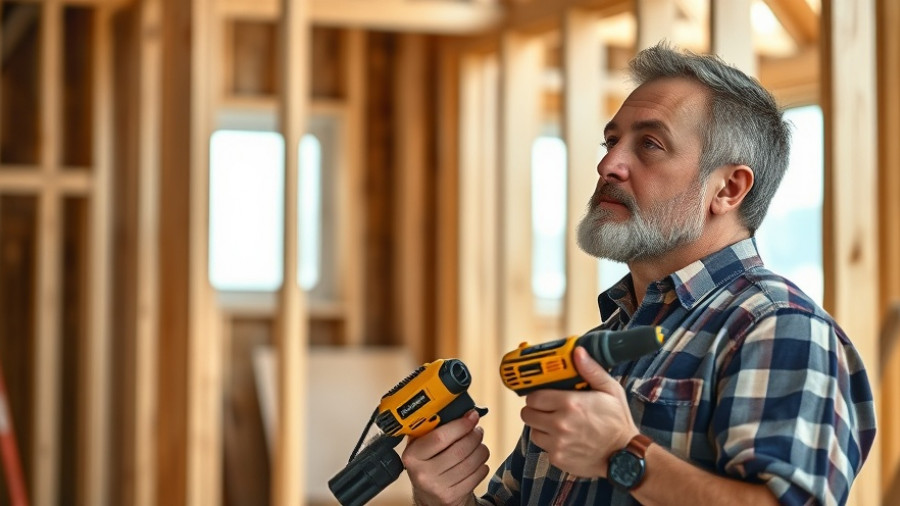
The Circular Saw Dilemma: Right-Handed vs. Left-Handed Usage
When it comes to selecting the right circular saw, misunderstandings about blade orientation abound. Conventional wisdom suggests that if the blade is on the left, it's designed for left-handed users, and vice versa. However, this prevailing notion does not hold true under closer examination. In fact, as explored by Niels in the video These Saws Aren't Made for 90% of People, the benefits of a right-sided blade become evident particularly for right-handed individuals, who make up the majority of the population.
In These Saws Aren't Made for 90% of People, the discussion dives into circular saw design and blade orientation, exploring key insights that sparked deeper analysis on our end.
Understanding Line of Sight in the Cutting Process
One of the critical factors affecting a saw's usability is the line of sight. A left-blade circular saw can obscure visibility for right-handed users; the motor blocks the view of the cutting line. Conversely, a right-blade configuration creates a visual window, allowing users to monitor where the blade makes contact with the material. This improved visibility enhances precision, helping ensure cleaner cuts and facilitating faster work for busy DIY enthusiasts.
Discharge Port: An Overlooked Feature
The direction of sawdust discharge is another aspect that could influence a user's choice. As Niels points out, the sawdust from a blade left saw can be discharged directly into the user's space or even onto the workpiece, obstructing the cut. Blade right saws, on the other hand, direct debris away from the user, minimizing dust clouds and creating a cleaner workspace, which aligns with the preferences of many home improvement enthusiasts.
Plate Contact: Ensuring Stability for Accurate Cuts
Stability during cutting is paramount in achieving accurate results. With a blade right saw, a larger portion of the plate makes contact with the material being retained. This increased surface contact lends better support and stability, leading to straighter cuts—an essential requirement for both novices and seasoned DIY veterans. For quick, efficient home improvement tasks, ensuring this stability can be a game changer.
Adjusting Blade Depth: A Practical Concern
Another vital operation is the adjustment of blade depth. For right-handed users, the design of blade left saws can complicate this process, as the adjustment lever can become awkward to reach. This can create frustrating scenarios, especially during time-sensitive work. A blade right saw allows for more straightforward depth adjustments without obstructing one's view, leading to increased efficiency and better overall workflow.
Two-Handed Operation: Enhancing Control while Cutting
Two-handed operation is commonplace when using circular saws, especially for clamped down materials. With blade left saws, positioning can obstruct visibility and lead to awkward hand placement. In contrast, blade right saws can improve access and comfort, allowing users to maintain their natural cutting stance without sacrificing view or control.
Conclusion: The Choice of Circular Saws
The debate between blade left and blade right circular saws ultimately connects back to user experience and practical concerns. Given that over 90% of the population is right-handed, improvements for right-handed saws offer specific advantages worth considering. As you make choices for your home improvement projects, aligning with tools designed for your usage can elevate your effectiveness and enhance your results.
If you're ready to transform your DIY experience, consider investing in a right-handed circular saw for accuracy, efficiency, and ease of use. Engaging with the right tools makes all the difference. Let's explore more insights into home improvement with practical tips tailored for every DIY scenario!
 Add Row
Add Row  Add
Add 




Write A Comment